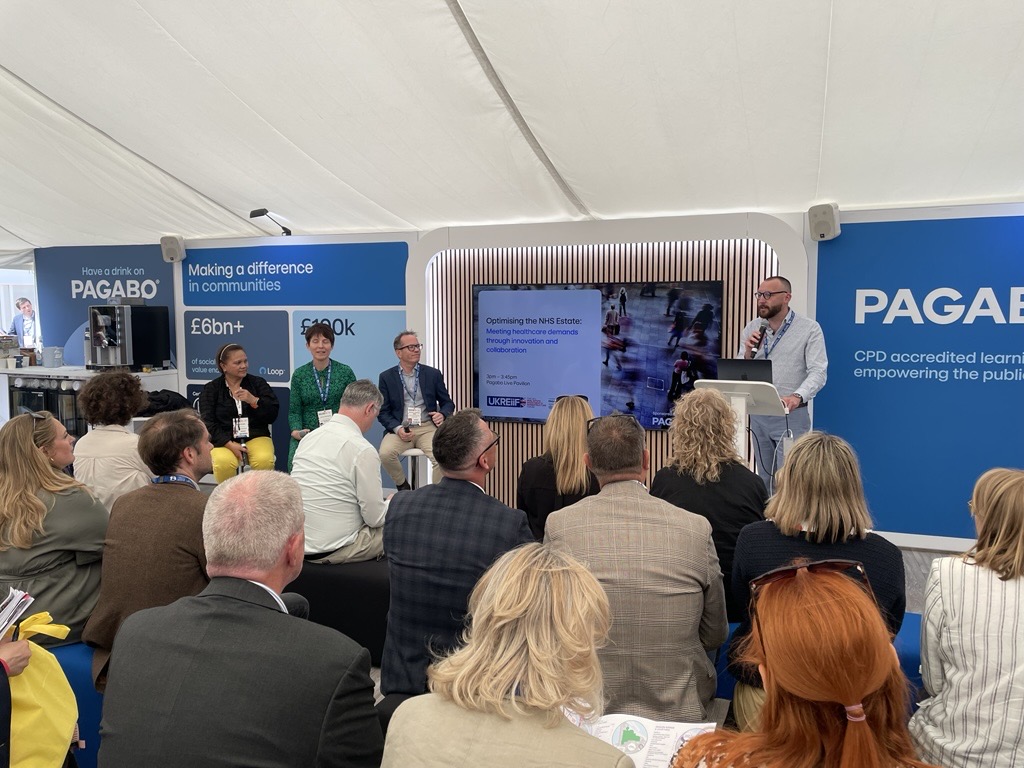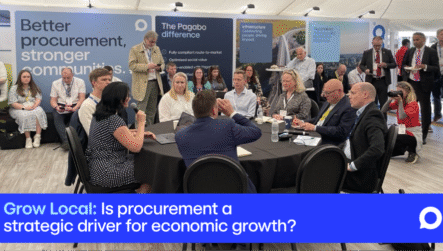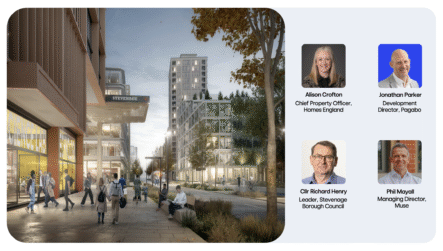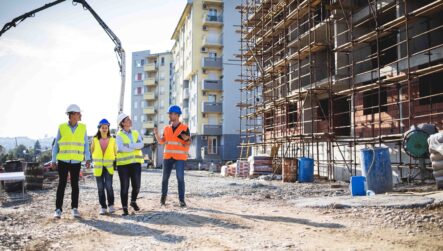Prescribed For Progress: How Procurement Is Rewriting The NHS Estate Script

The NHS estate is under unprecedented pressure. As patient demand grows, the infrastructure supporting healthcare delivery is struggling to keep pace – and has been for some time. A decade of limited growth and investment has contributed to a visible gap between care needs and physical capacity. The result? An ageing estate that, in some cases, directly compromises patient safety and staff productivity.
Yet, the answer isn’t just about building more – it’s about building smarter. That’s where strategic public sector procurement comes in. Procurement isn’t simply a mechanism for delivery; it’s a tool for cutting through red tape, unlocking innovation, compliance, sustainability, social value, and efficiency all at once.
When used strategically, public sector procurement for healthcare is one of the most powerful tools available to NHS organisations. It’s the mechanism by which transformation becomes real: funding is unlocked, compliance is assured, complexity becomes manageable, and social value comes baked in.
That was the focus of our healthcare session of Pagabo Live at UKREiiF, where host Tom Snee of Cartwright was joined by NHS healthcare leaders Janet Smith, head of sustainability at The Royal Wolverhampton NHS Trust and Walsall Healthcare NHS Trust; Eamonn Sullivan MBE, deputy chief nursing officer for England at NHS England; and Jenny Ehrhardt, director of finance at Leeds Teaching Hospitals NHS Trust.
A capacity crunch rooted in infrastructure
It’s a stark backdrop. The NHS estate is vast and for many trusts, capital is swallowed up by urgent maintenance rather than strategic development, with estates teams increasingly needing to do more with less. Indeed, over the past decade, the NHS estate has seen less square metre growth than in any other period of its history. The result? Hospitals operating beyond capacity, infrastructure holding back innovation, and a direct impact on patient care and staff productivity.
Even so, expectations continue to rise. Whether it’s virtual wards, community diagnostics facilities, or same-day emergency care, new models of delivery are demanding more flexible, energy-efficient, and digitally enabled buildings. The estate is expected to enable innovation, while functioning with systems that don’t currently create an innovative environment.
Many trusts are working to address critical backlog maintenance and assess their assets more strategically – categorising estates into what’s poor but essential, what’s adaptable, and what’s surplus. It’s not a case of just tackling the buildings – it’s tackling what happens inside them too. But with capital tight and resource stretched, choices are difficult.
The strategic shift: from compliance to catalyst
The NHS is shifting from reactive fixes to long-term planning. That includes developing robust infrastructure strategies aligned to funding windows like the New Hospitals Programme (NHP), and exploring innovative financing models, such as leasing, public-private partnerships, and local estate rationalisation.
But unlocking that ambition means thinking differently about procurement. The Procurement Act creates opportunities to engage suppliers earlier, draw up smarter specifications, and shape delivery around long-term goals – not just short-term wins.
A key message from the panel? Better procurement leads to better project delivery. By investing more time upfront, trusts can avoid the pitfalls of unrealistic briefs, and instead co-design solutions that are financially viable, net zero-ready, and clinically flexible.
Supply chains: resilience, relationships, and readiness
Continued supply chain disruption is seen across most sectors, with labour shortages, material costs and inflation all pulling their own strings. But when engaged earlier, supply chains become more resilient thanks to stronger pipelines and increased certainty for their own investments.
When strategised, healthcare can provide that long-term certainty. Whether it’s a brand-new hospital or a maintenance backlog programme, when planned effectively the supply chain can see the coordinated line of work coming down the pipeline – allowing it to engage with bidding processes at the right point and invest in the people or tools needed for longer-term delivery. As with most things in the built environment, it’s about building deeper partnerships between clients, contractors, and suppliers.
Modern procurement routes can help. Frameworks and pre-qualified supplier pools bring agility and reduce risk, while long-term alliances support continuity and knowledge retention. Just like any other project, when the supply chain is engaged and involved early on healthcare schemes, the result is reduced cost and improved buildability.
Trusts are also increasingly focused on social value and local economic impact, seeking supply chain partners who understand community context and can deliver more than just buildings – from skills investment to sustainable sourcing.
Net zero, finances and tailored estate needs
Sustainability targets are a further driver of estate transformation. From electrification and decarbonisation to smarter heat systems and grid dependency, the costs and complexity of delivering net zero are rising. And yet, the risk of delay is even greater – with potential penalties, lost efficiency, and public accountability on the line.
There is a tension between intention and impact that commonly appears, particularly around net zero and financing. Janet reflected on this, saying: “Buying 100% renewable energy does cost more, but when your carbon conversion at the end of the year remains the same as non-green energy it does make people question why they are ‘breaking their backs’ to not see the benefit – and finance directors will question why revenue pressures are being upped for the same end result.”
Similarly, the rapid pace of technological development demands that estate investments be adaptable to keep pace. Yet at the same time, choices need to be made from an informed basis. From air source heat pumps to digital twins, specifications must reflect what is practical and futureproof for individual estate needs – not just what’s currently fashionable.
Building flexibly to build a legacy
The NHS must also ensure its estate meets new patterns of care. The future isn’t necessarily bigger hospitals – it’s smarter, more adaptable facilities that reflect how people want to access healthcare. That includes not just big hospitals, but also supporting virtual wards, community diagnostics, and care closer to home.
Design now starts with the service model, not the floor plan, the panel noted. That shift demands estates that can flex with demand, which is a focus for Hospital 2.0 for example. This new standardised approach to delivering hospitals within the NHP was a big talking point in one UKREiiF panel – going into detail on how the approach blends modular components, digital integrations, and a focus on adaptability. Delivered at scale, it promises cost savings, supply chain confidence, and faster mobilisation.
With so much investment on the horizon – and so much need already present – the healthcare sector must ask itself: what kind of legacy is being created?
Here it’s important to step back and remember that the NHS estate is more than infrastructure. It – and the NHS itself – is part of the national fabric, rooted in place and identity. That mindset changes the question from ‘how much can we afford?’ to ‘how can we make this count?’
Legacy thinking brings in design quality, clinical flexibility, public health impact, and community value. Procurement for healthcare again becomes a critical lever: shaping briefs that go beyond cost, evaluating based on impact, and choosing delivery models that deliver for the long term – not just the next spending cycle.
Procurement: the system’s most underused superpower
As legacy systems age and the cost of inaction grows, it’s increasingly clear: procurement is not an obstacle – it’s the solution. A well-designed process can balance value and speed, unlock supplier innovation, reduce waste, and de-risk complexity.
It’s also key to aligning new developments with legacy estate planning. With very few trusts having robust estate transition strategies, procurement offers a way to phase, fund, and futureproof developments in a realistic, joined-up way.
Ultimately, as the panel concluded, the NHS doesn’t just need more capital – it needs to be smarter about how it spends it. By using procurement to bridge ambition and execution, trusts can deliver infrastructure that’s not only fit for purpose, but ready for the future.
Watch our Optimising NHS Estates talk from UKREiiF HERE
Find out more about Pagabo’s Framework Solutions for NHS HERE
Discover our frameworks






































































